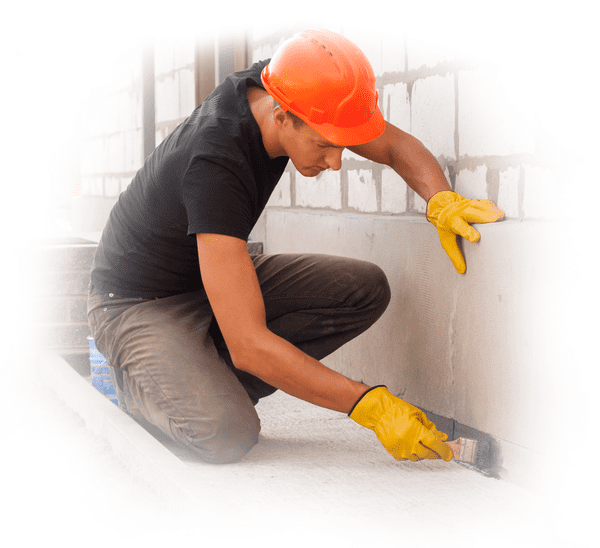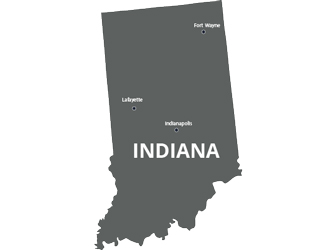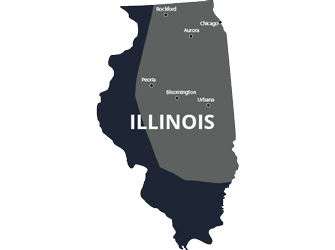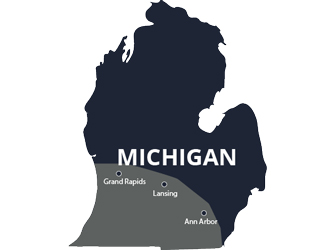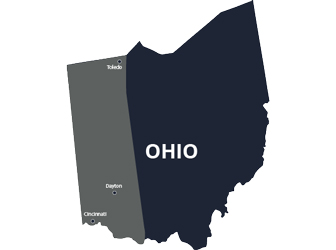Updated 1/1/2021
Developing a home waterproofing plan after your basement floods is like securing the gate after your dog gets out and chases the neighbor’s chickens. Both of these situations are stressful, frustrating, and can be very costly (assuming your dog is more effective at hunting than mine).
Even if you only use your basement for utilities and storage, flooding can do serious damage. Laundry and HVAC units aren’t designed to be submerged. And if you’ve stored heirlooms or irreplaceable items with sentimental value? Well, there’s bound to be some grief involved.
There are environmental cues that indicate you need to be very proactive about waterproofing, but even the best-situated home can flood if the circumstances are right. Acculevel has been helping homeowners waterproof their basements and crawl spaces since their founding in 1996. We want to help you avoid water damage whenever possible, to protect your home and belongings.
In this article, we’re going to describe steps you can take on your own, what signs suggest you need professional waterproofing, and give you the resources to be better informed and prepared.
Prevent Water Intrusion
The first two are measures you can take yourself, if you are a DIY sort of person. They are both aimed at keeping water away from your foundation, where it is most likely to work its way into your basement or crawl space.
Grading
Contrary to what most of us think, the ground around a home should not be level. It should slope gradually down-and-away from the house. This is called grading, and it encourages rainwater to drain away from your home’s foundation. It’s not a guarantee against water seepage, but it’s a great starting point.
Guttering
Evaluate the guttering around your home (and garage, if you have one). Make certain they are in good condition, clear of any obstructions, and are securely fastened. The downspouts should be aimed away from your home’s foundation; we strongly recommend that the downspouts empty at least 10 feel from your house. If you’re not familiar with this project, we have a step-by-step downspout extension tutorial here.
Close the Basement Drain
If your basement has a drain set into the floor, please have it adjusted by a quality plumber. A professional can install what is called a backwater valve in the floor drain. This valve ensures the drain can only work in one direction (out!). This will prevent anything, including sewage, from flowing into the home.
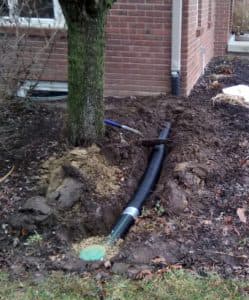 This photo was taken by an Acculevel crew member, during an installation. The downspout has been extended away from the home.
This photo was taken by an Acculevel crew member, during an installation. The downspout has been extended away from the home.
Signs You May Need a Waterproofing System Installed
Obviously, if you have water leaking into your basement or standing water in your crawl space, you need waterproofing. But there are other, less obvious, environmental cues that indicate your home needs protection against water intrusion.
- You live in an area with a high water table- near bodies of water or at a lower elevation.
- There is a significant amount of clay in the soil. Clay does not absorb water as effectively as other soil types.
- You have hairline cracks in the foundation. These may be caused by hydrostatic pressure, and can be an entry point for water leaks.
- Efflorescence (crystals) or water lines on the walls, which are an indication of previous water intrusion.
- There is a musty smell in the basement or crawl space which indicates the area is damp and humid. This can lead to mold or other biological growth.
A waterproofing system requires two major components: water drainage and a sump pump. The type of drainage system will vary, depending on the kind of basement floor you have. If you have a crawl space with a dirt floor, you should also have a vapor barrier installed.
If you don’t have any water intrusion, but you do have the musty smells that indicate moisture is a present and problematic, you should consider installing a whole house dehumidifier. A good quality dehumidifier will do more than reduce the humidity in your home; it will have a significant impact on your air quality and health.
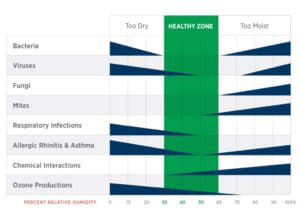
A study performed by the American Society of Heating, Refrigerating and Air-conditioning Engineers determined that the ideal humidity level is around 50%. This is the best condition for your home, and the least likely to produce bacteria, virus, fungi, or other irritants.
Want to Know More About Basement Waterproofing?
We have written a detailed guide to basement waterproofing, with the goal of answering all of our customers’ questions in one convenient location. This guide is updated as new techniques, equipment, and methods are developed; please bookmark it and use it as a reference any time you encounter new or unexpected concerns.
Does Your Basement or Crawl Space Need Waterproofing?
If you live in Indiana or the surrounding states, contact Acculevel for a free estimate. We will schedule an appointment with one of our experienced project managers. They will evaluate your home and recommend the best course of action for you, to keep your home strong and healthy for years to come.
If you are having trouble managing the water in your basement, moisture in your crawl space, or need a dehumidifier, we would be happy to help! The water drainage systems that we install are warrantied for the life of your home, and both sump pumps and dehumidifiers are warrantied for 5 years.
Don’t live in our service area? Find an experienced local foundation company, and make an appointment. Before you sign a contract for any service, you should always verify the company is reputable, insured, and accredited by the Better Business Bureau.















